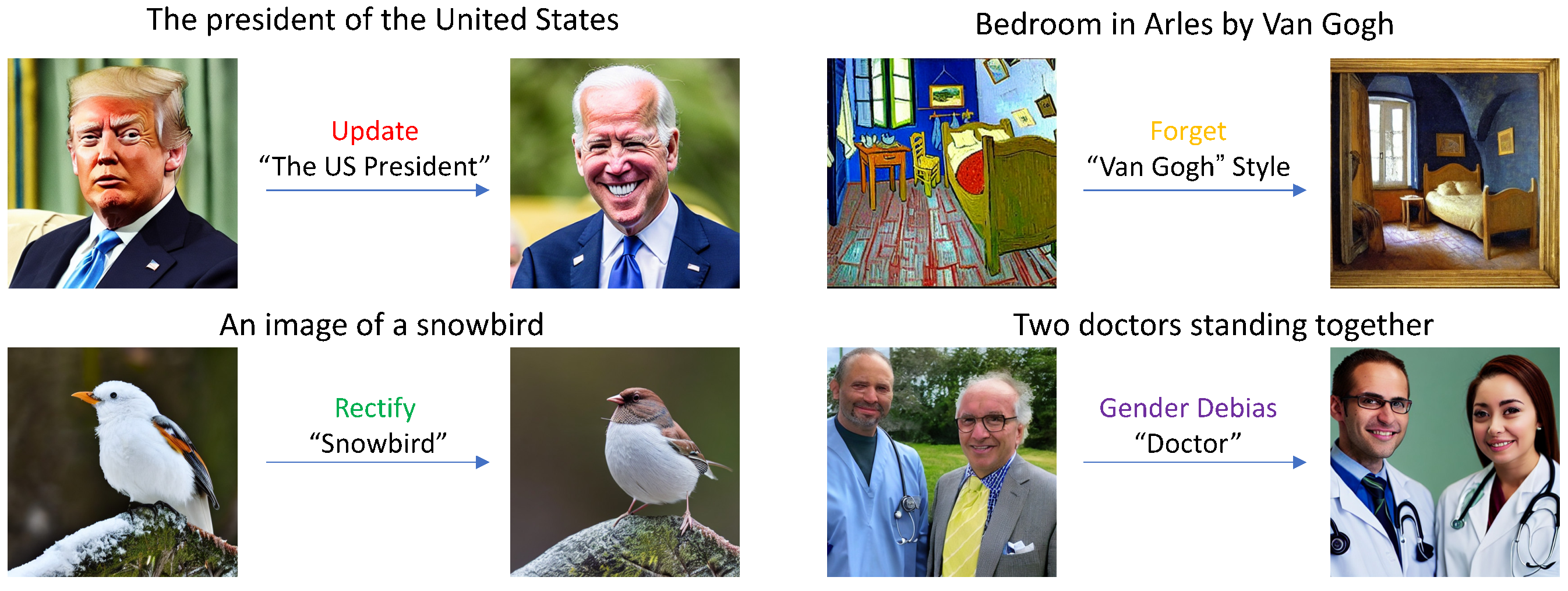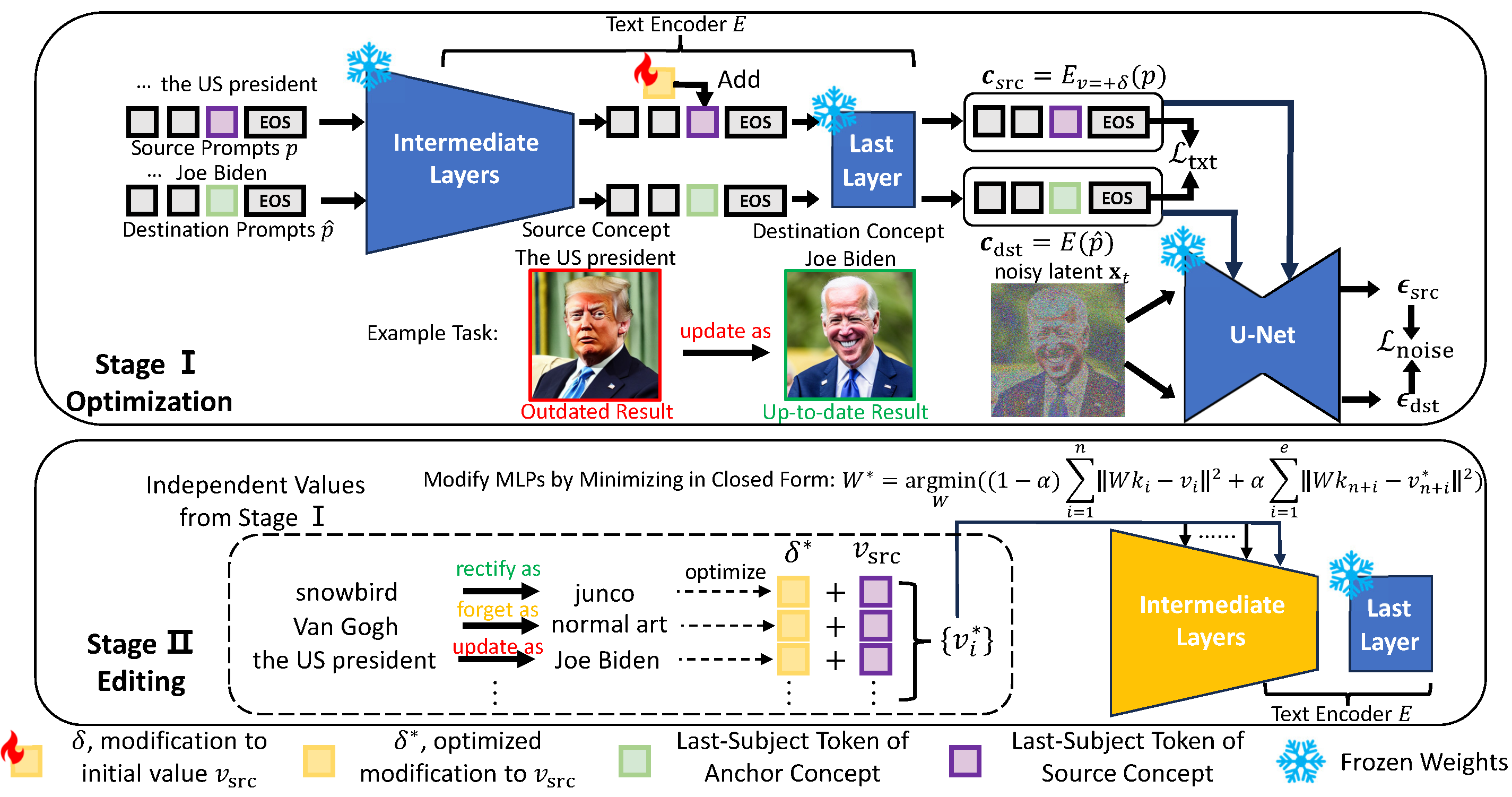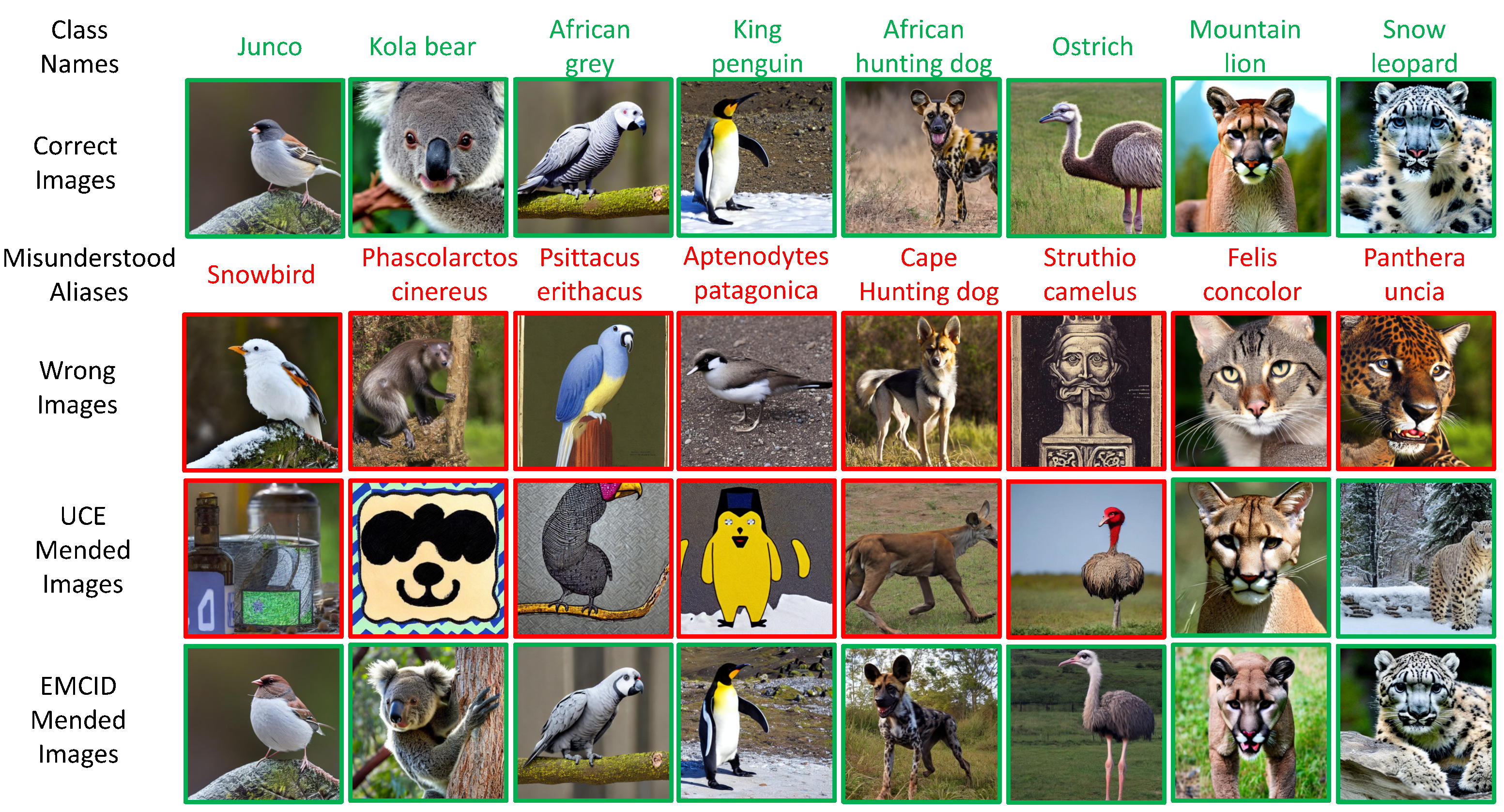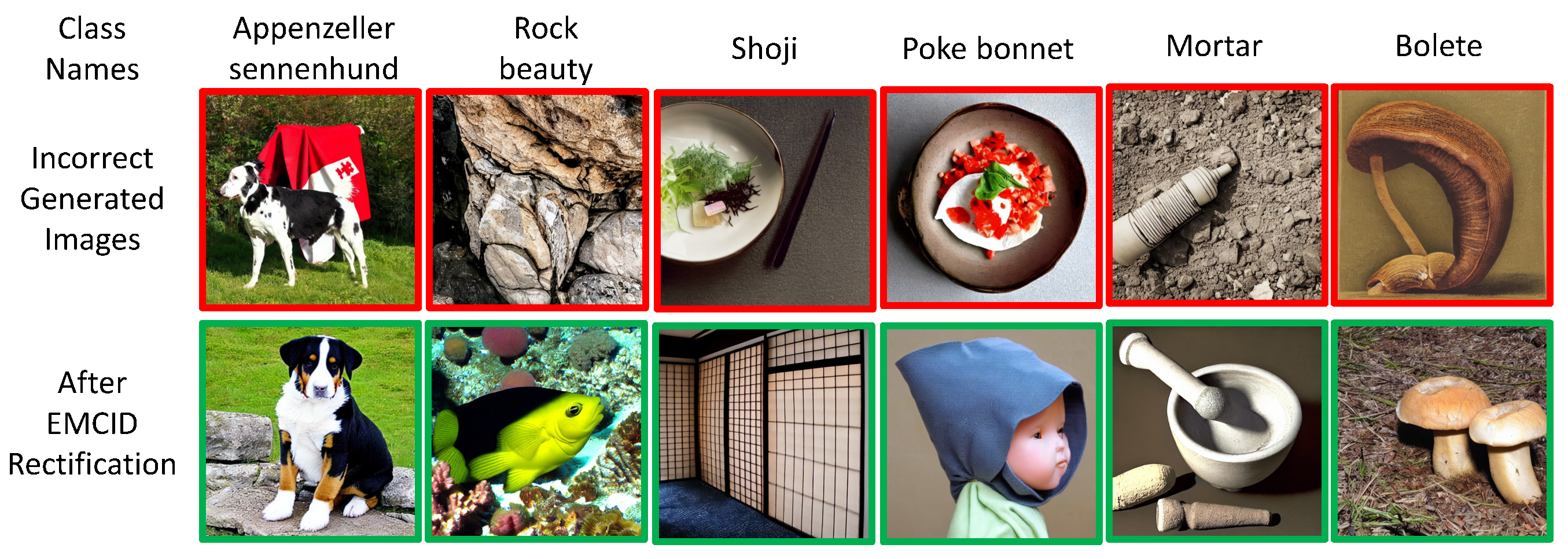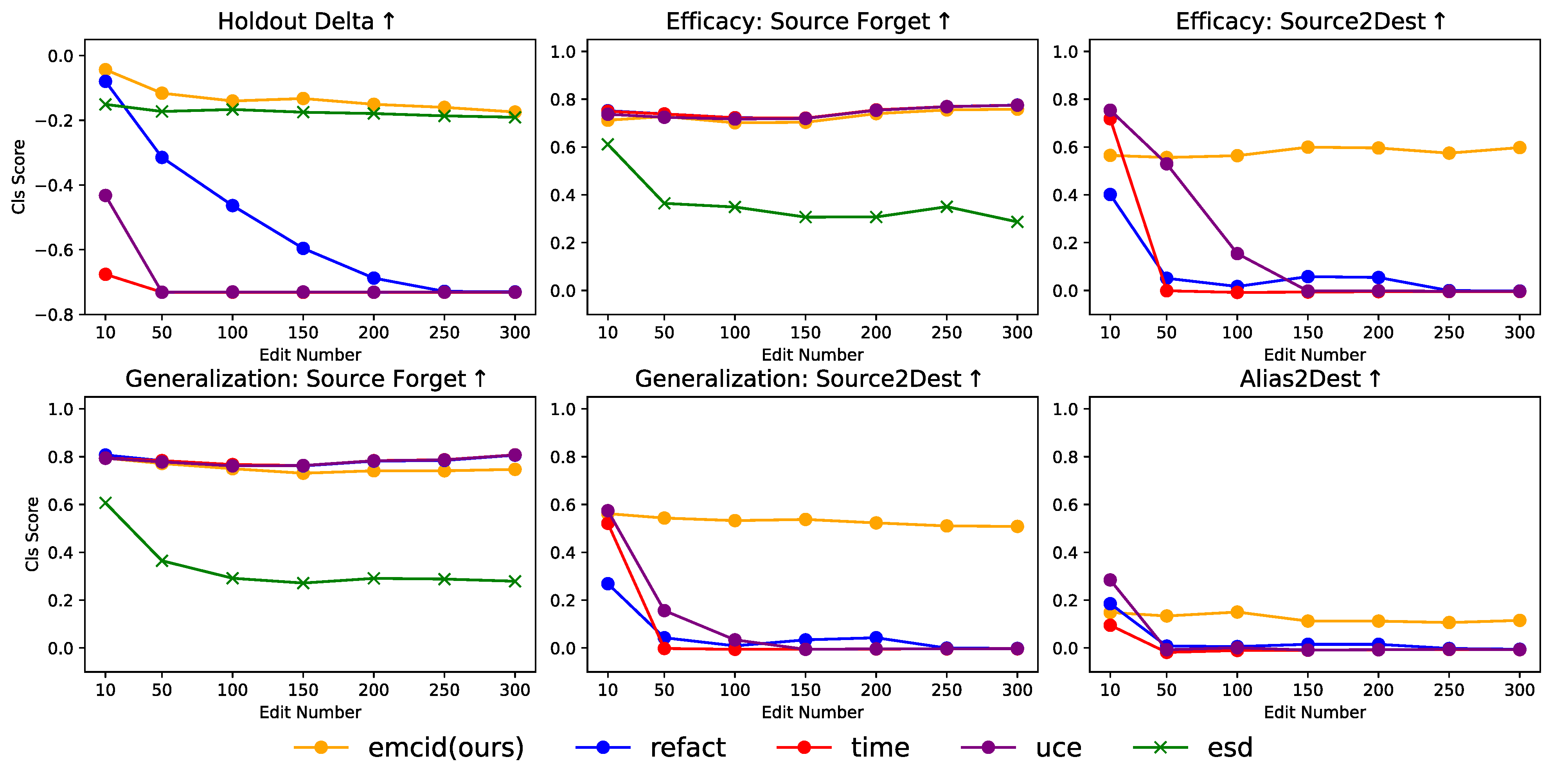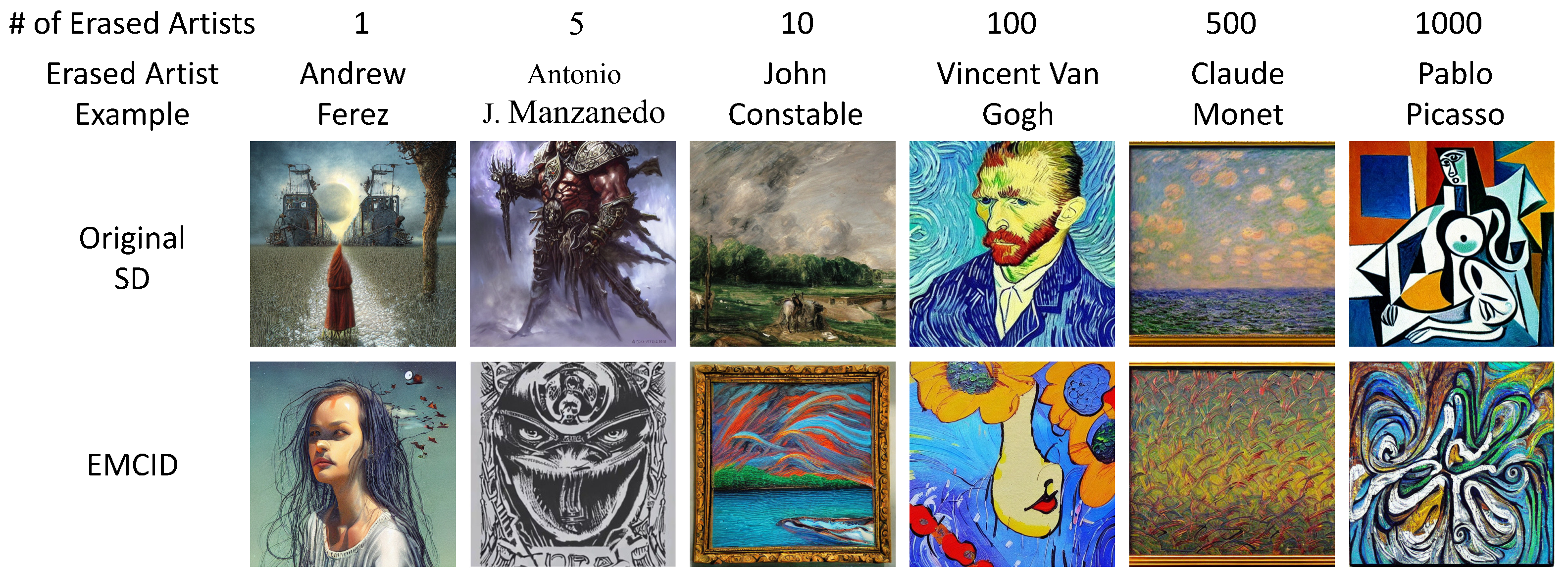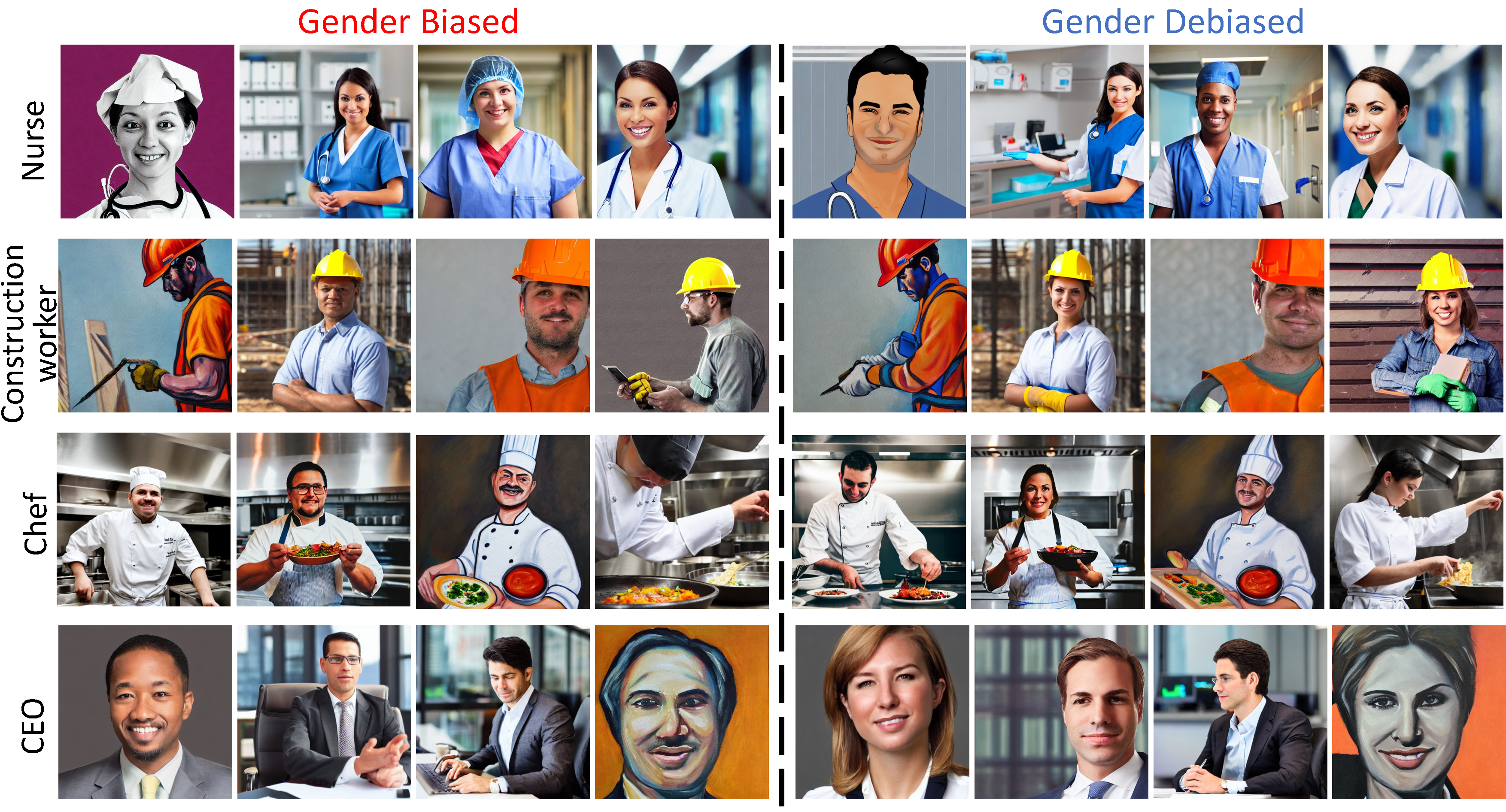Abstract
Text-to-image diffusion models suffer from the risk of generating outdated, copyrighted, incorrect, and biased content. While previous methods have mitigated the issues on a small scale, it is essential to handle them simultaneously in larger-scale real-world scenarios. We propose a two-stage method, Editing Massive Concepts In Diffusion Models(EMCID). The first stage performs memory optimization for each individual concept with dual self-distillation from text alignment loss and diffusion noise prediction loss. The second stage conducts massive concept editing with multi-layer, closed form model editing. We further propose a comprehensive benchmark, named ImageNet Concept Editing Benchmark(ICEB), for evaluating massive concept editing for T2I models with two subtasks, free-form prompts, massive concept categories, and extensive evaluation metrics. Extensive experiments conducted on our proposed benchmark and previous benchmarks demonstrate the superior scalability of EMCID for editing up to 1,000 concepts, providing a practical approach for fast adjustment and re-deployment of T2I diffusion models in real-world applications.
